By Team Dirty
Oct 30, 2021,
By Team Dirty
Oct 30, 2021,
We see it all the time in our Facebook group and support inbox: “I want to feed my family whole-food plant-based (WFPB) meals, but my kids are picky eaters. What should I do?” We brought in the big guns for this one: the parents of our Clean Food Dirty Girl Facebook group. These parents know what’s up when it comes to picky kids and plant based meals. We’ve compiled 18 tips for parents of picky eaters and a whole list of plant-based recipes that picky kids will happily eat.
Feeding picky eaters can be stressful and frustrating. A particularly stubborn eater could make a saint second-guess their values. But nutrition is important to you, so you knuckle down and get just as determined.
You tempt, persuade, bribe, and sometimes outright lie to your kid. You dread mealtimes. You’re fighting a losing war three times a day with a tiny tyrant. You used to be patient and easy-going. Your kid used to eat anything you put in front of them. What the hell happened?
We’re here to help, friend. Take a deep breath, and back away from the peanut butter and jelly.
Of course, picky eating advice isn’t one size fits all. Some kids may have allergies, medical considerations, sensory issues, or special needs. What works for one picky eater may not work for another. This is all completely normal—there’s nothing wrong with your kiddo! Take what’s helpful from this blog post and leave the rest. Make substitutions or leave out things you know your child won’t touch. Be patient, kind, and compassionate with yourself (and your picky eater).
Let’s do this. We’ll start with the tips and then go on to the recipes.
18 Tips for Parents of Picky Eaters
- Perfection is overrated. If your kid won’t eat whole wheat pasta, use white pasta and don’t sweat it. If homemade crackers are a no-go, buy the closest ones to your nutritional ideals that your kid will actually eat. Make the best choices you can with the resources you have and feel confident knowing you’re doing a great job.
- Hold the pressure, this is a human, not an Instant Pot. A “no pressure” mentality can be a lifesaver for you and your picky eater. This concept is recommended both by trusted pediatric nutritionists and our knowledgeable parents. When serving meals, do your best to provide a couple of “safe” foods your picky eater will usually eat without protest and at least one new food (or a new preparation of more familiar foods). After you put the plate in front of your little one, it’s out of your hands. Either they’ll eat what’s there or they won’t. During the meal, try not to praise them for what they’re eating, encourage them to eat more, or suggest they try something they haven’t yet. Even though your focus on them is well-intentioned, it can be a deterrent for children to eat if they feel pressured, judged, or fussed over. You provide the food, but they decide if they eat it. Unless there are underlying medical concerns at play, your child won’t starve themselves. They’re better at eating intuitively than we are, and their lifelong relationship with food will be better served if we help foster trust in their hunger cues. Sometimes your kid will survive on what feels like nothing to you and other times, they’ll ask for seconds or thirds. This is totally normal.
- Ease into new tastes. For unfamiliar foods, start slow. Try putting a small amount on the plate alongside a “safe” food that you know your kid will eat. Sometimes, breaking down new foods or recipes and offering each element individually can help. For example, when serving a new stir-fried rice dish, you may try serving the individual veggies and rice separately.
- Try raw veggies alongside cooked. Many kids will eat raw veggies before trying cooked versions. You can serve the raw veggies right alongside the cooked ones. If your kid eats the raw veggie, but not the cooked one, that’s totally fine! Adding a couple of raw veggies to a plate is a great way to help supplement your picky eater’s limited diet. Plan to serve the cooked one again so they continue to get familiar with it.
- Prepare for change. Each day and each meal can be different. Your child may decide they no longer like what they couldn’t get enough of last week. Don’t take it personally (or, if you must take it personally, do so out of earshot of the tiny tyrant).
- Start small. Smaller serving sizes are less intimidating for kids. Start small with new foods and let them know they can have more if they want.
- Encourage food exploration. You may find success serving a “base” meal and allowing your kids to add extras to suit their tastes. For example, if there’s a veggie burger in the Clean Food Dirty Girl Meal Plan this week, serve the patty and the bun, but allow your kids to add their own sauces, condiments, and veggies buffet-style. You can also do this with pasta, salads, sandwiches, tacos, etc. This can encourage a sense of exploration and get your picky eater interested in trying new tastes and texture combinations.
- Involve kids with shopping, prep, and more. Getting your kids involved in grocery shopping, preparing, and cooking food can help alleviate pickiness. There are lots of age-appropriate ways to do this. Taking kids to the grocery store isn’t always fun, but simple preps like cutting mushrooms with a plastic knife, rinsing berries, or operating the salad spinner can help them feel like they are a part of the process (see Resources below for more ideas).
- Teach them about nutrition. Your kids may find it interesting learning what each food offers to our bodies nutritionally. This information should be kept age-appropriate. For example, you might tell a toddler that orange foods like carrots help us see in the dark, and you might tell a middle schooler that carrots are orange because of Vitamin A, which helps keep our eyes and immune systems healthy by protecting them as we get older.
- Break it down. If large pieces of veggies, like carrots or broccoli, in recipes are a no go, try using your food processor to break them down ultra-fine.
- Bring a “no, thank you” bowl to the table. If your picky eater’s attention gets caught up with things on their plate they don’t want to eat, you can offer a “no, thank you” bowl where they can move any foods they don’t want. It’s a great way to keep focus on other things instead of what they are or aren’t eating.
- The sauce is the boss. If your picky eater likes pasta and will try new sauces, then rotating which sauces you put on the pasta can help broaden their palate and introduce a variety of ingredients and nutrition. Our plant based Recipe Vault is full of delicious sauces for you and your kids to try.
- Watch your food (and your kid) grow. If you can, start a small veggie garden (even a couple of pots on a window sill will be fun). Have your kids help you plant, harvest, and prepare the veggies you grow. Facilitating interest in where food comes from and getting your kids involved can go a long way in sparking curiosity about new foods.
- Tinker with textures. If your picky eater tolerates most smoothies but not soups, it may be a texture issue. Try pureeing the soups completely. Pureed soups have a more acceptable texture for some kids.
- Model healthy eating habits. Acknowledging and working on your own food-related issues will help both you and your kid. We know it’s not easy, especially if you’re carrying childhood trauma related to eating or shame and guilt about food. But, it can be helpful to your kids to see you listening to your body’s hunger cues and for you and other adults to refrain from discussing weight (gain or loss), or referring to certain foods as “bad” or “good.” This can be a particularly tricky subject for plant based parents with picky eaters. Our advice is to talk matter-of-factly about why your family eats some foods and not others (e.g. we don’t drink milk from cows because that milk is made for baby cows, not people). Keep it neutral, age-appropriate, and avoid using judgement words. When discussing “healthy” and “unhealthy” plant based foods, you can use this same approach. For example, some foods help us grow and feel better than other foods, and we choose to eat more of those, but we enjoy dessert, too.
- It’s okay to supplement. If meal times are hit-or-miss even with these helpful tips for picky eaters, don’t be afraid to supplement your kids’ diets with smoothies and more robust snacks, especially if your success rates for these are higher. Smoothies are great for including protein and nutrient-dense items like nuts or seeds (in butter form or raw), beans, veggies (raw zucchini, carrots, beets, etc..), and greens. It may be helpful to think of snack time as mini-meals, offering more opportunities for nutrition. Serve a few things for snack time instead of just one. It doesn’t have to be complicated or time-consuming. For example, you may serve some WFPB crackers (make a big batch once every couple of weeks), one or two types of cut fruit/veggies (you can cut all your snack fruit and veggies for the week on your grocery day, or do a batch of prepared snack fruit/veggies every couple of days), and plant based yogurt. Snacktime and smoothies are typically lower pressure than meal times with the family, use this to your advantage!
- Keep trying! Continue serving new foods even if they don’t touch it. The repeated exposure will help normalize the new offerings, and eventually, they just might give it a taste, especially if they don’t feel pressured.
- Make it fun. Last but not least, have fun and don’t be afraid to introduce play. One parent reported success with their picky eater enjoying broccoli more after pretending together that the florets were shrunken “dinosaur trees.” You’ll see lots of examples below of fun nicknames our parents and their kids have given to their favorite recipes.
Recipe Recommendations from Parents of Picky Eaters
Here are the recipes that parents from our community have had success with. These are the plant-based recipes that their picky kids will happily eat.
Pasta

From the Classroom
BBQ Smack-a-roni & Cheese (some kiddos have no interest in jackfruit. Leave that part out or serve it separately if you think it will be a deal-breaker.) (pictured above)
Veggie Lasagna Roll Ups with Pink Sauce and Garlic Parmigiano Bread (works best when you batch all the components first. This recipe is from the Love Meal Plan.)
From the Blog
Sauces/Dressings
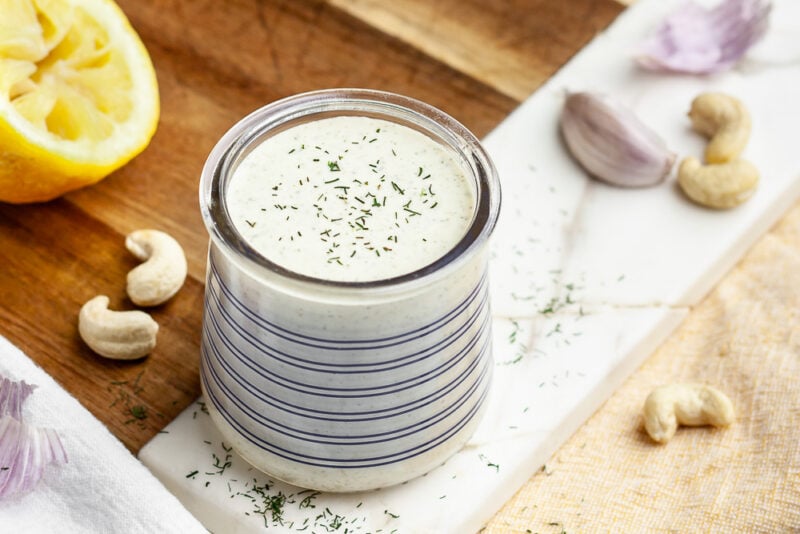
From the Classroom
The cauliflower-based cheesy sauces (Queso Blanco, Smoky Gouda Cheesy Sauce, and Quesillo-inspired Cheesy Sauce) can be a great way to add some nutritional content to dishes. We won’t tell if you smother all the broccoli served in your house with cheesy sauce!
Sunny Side Up Sauce alone or with Simple Hash
From the Blog
Ranch Dressing (pictured above)
Smoky Red Pepper Sauce (dubbed Awesome Sauce by one parent in our community’s picky eater)
Soups
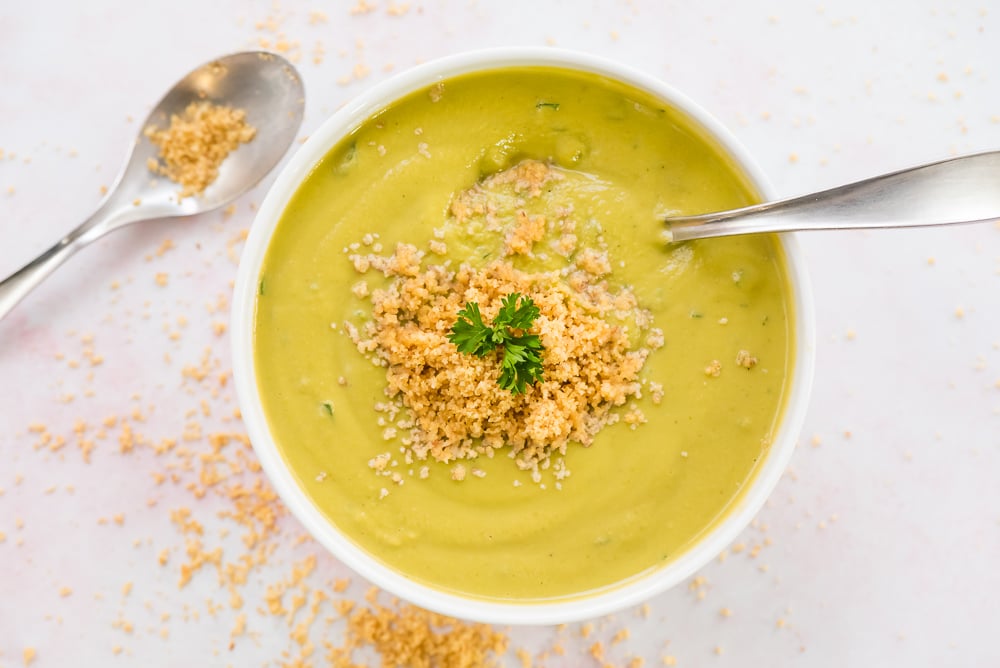
From the Classroom
Smoky Split Pea Soup (one mom says she and her kiddo call this Dinosaur Soup)
Bountiful Butternut & Bean Soup
From the Blog
Easy Peas-y Soup (the parent who recommended this one calls it Hulk Soup) (pictured above)
Tofu

From the Classroom
Crispy Toficken Nuggets (pictured above)
Antipasto Tofu Sub Sandwich (this was a picky eater’s birthday meal request!)
If your kid will eat tofu scrambles, they can be a great way to add a variety of veggies to your kid’s diet in a familiar and welcome way. Some of our parents reported that their kids like their scramble served in a wrap.
Cheesy Wizard-style Rebellious Reuben (one picky 7-year-old reported this was the best tofu she’s ever eaten)
From the Blog
Potatoes

From the Classroom
Baldwin Park Double Cheeseburger and Beast Fries (skip the jalapenos if your kid doesn’t like spicy. This is a meal much easier to put together when batched. The recipe is from #CaliforniaDreamin if you want to try that Meal Plan.)
From the Blog
Oil-free French Fries (pictured above)
Pizza Inspired

From the Classroom
From the Blog
Pizza Burgers (pictured above)
Crispy/Crunchy Texture

From the Classroom
Supreme Crunchy Wraps with Creamy Salsa Dip and Bell Pepper Dippers (easier to batch all the components first. It’s from the #HappyFamily Meal Plan, a plan created with kids in mind) (pictured above)
Smooth Texture

From the Classroom
Guacamole (pictured above)
From the Blog
Others

From the Classroom
Chunky Monkey Muffins (pictured above)
Spellbinding Bangers & Cauli Mash
Other Ideas, No Recipe Required
Raw veggies (with or without sauces and dressings for dipping)
PB&J (sometimes you just need your kid to eat, try it with this jam recipe for more nutrition and less sugar)
Smoothies (add nuts, seeds, beans, veggies, and/or greens for extra nutritional impact)
Quesadillas made with a Clean Food Dirty Girl cheesy sauce and veggies (if your kid is ok with them)
Baked potatoes with a Clean Food Dirty Girl cheesy sauce
Avocado toast (with or without extra veggies on top)
Family Favorite Plant-Based Meal Plans


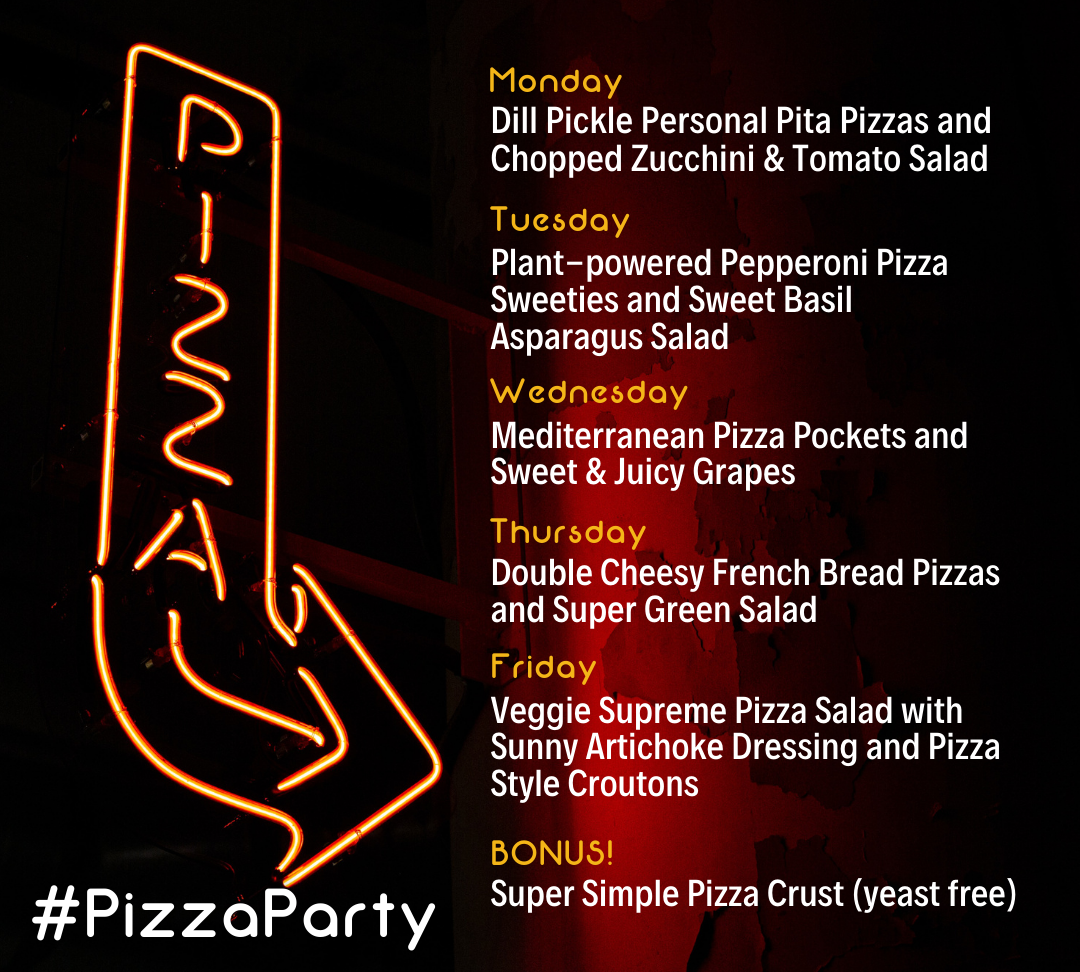


We have one last tip for you, my dear. You can do this! It will get better!
Picky eating is totally normal for young kids, and most grow out of it. You’re doing a great job and your kiddo is so lucky to have such a loving, thoughtful parent.
We know we’ve given you a lot to think about with these 18 tips for parents of picky eaters. It’s a lot to try. If you’re overwhelmed, slow down. Pick just one or two new strategies and see how it goes. Maybe it will work, maybe it won’t. You’re still doing great.
If you have tried-and-true picky eating techniques or just want a safe space to commiserate (no judgment!), we’ve got you. Let us know in the comments below.
If your wee one isn’t quite ready to nosh on all the plants, check out our Guide to Plant Based Baby-Led Weaning. Then, pop over Brittany’s post on how she feeds her plant based family on a budget.
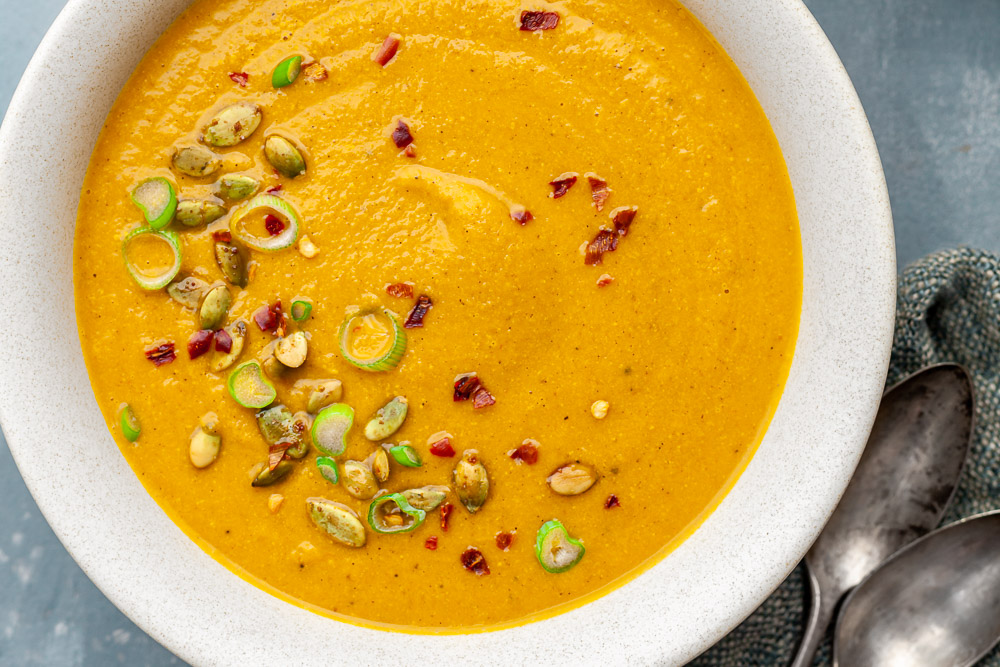
Ingredients
- ½ cup raw cashews, soaked in water for at least 10 minutes (65 g)
- 1 cup sweet apple, cored and diced (about 1 medium-sized apple / 120 g)
- ¾ cup carrot, diced (about 2 medium-sized carrots / 90 g)
- ¾ cup yellow onion, diced (90 g)
- 1½ cups canned 100% pure pumpkin puree (360 g)
- 3 cups low-sodium vegetable broth, divided (705 ml)
- ¾ cup unsweetened, non-dairy milk (180 ml)
- 2 tablespoons 100% pure maple syrup
- ½ tablespoon curry powder (use less if your curry is spicy)
- 1 teaspoon coconut aminos
- 1 teaspoon apple cider vinegar
- 1 teaspoon salt
- ½ teaspoon cinnamon powder
- ½ teaspoon garlic powder
- ¼ teaspoon black pepper (about 10 turns)
- pinch ground nutmeg
- pinch ginger powder
- pinch cayenne powder
- green onions, sliced (optional)
- tamari toasted pumpkin seeds (optional) (see Notes for this recipe)
- dried red chili flakes (optional)
Instructions
- Get the cashews soaking and then heat a large stock pot over medium heat for 2 minutes. Add the apple, carrot, and onion and saute for 6–8 minutes, until the onion is tender. Transfer to your blender.
- Drain the cashews (discard the soaking water) and add them to the blender, along with the pumpkin puree and 2 cups (470 ml) of broth. Process until completely smooth.
- Return the mixture to the stock pot and whisk in the remaining 1 cup (235 ml) of broth and the rest of the ingredients. Place a lid on the pot at an angle and simmer over medium-low heat for 10 minutes.
- For serving, place a generous serving of soup into your soup bowl and add a sprinkle of green onions, tamari toasted pumpkin seeds, and dried red chili flakes, if using.
Notes











May you have a happy week full of plant wins for your little one.
We’re cheering you and your family on!
Team Dirty
Resources
- How Young Kids Can Help in the Kitchen
- Plant Based Juniors
- A Parent’s Guide to Intuitive Eating, a book by Dr. Yami Cazorla-Lancaster, a plant based pediatrician. Check out Molly’s interview with Dr. Yami here.
- How to Talk to Kids about Food and Health, a helpful article by Dr. Jennifer Cohen (Dr. Cohen is not plant based, but the article is still a very good read)
1 Comments
Leave a Comment
Love the food that loves you back
Get instant access to thousands of plant-based recipes and meal plans, no credit card or perfection required.


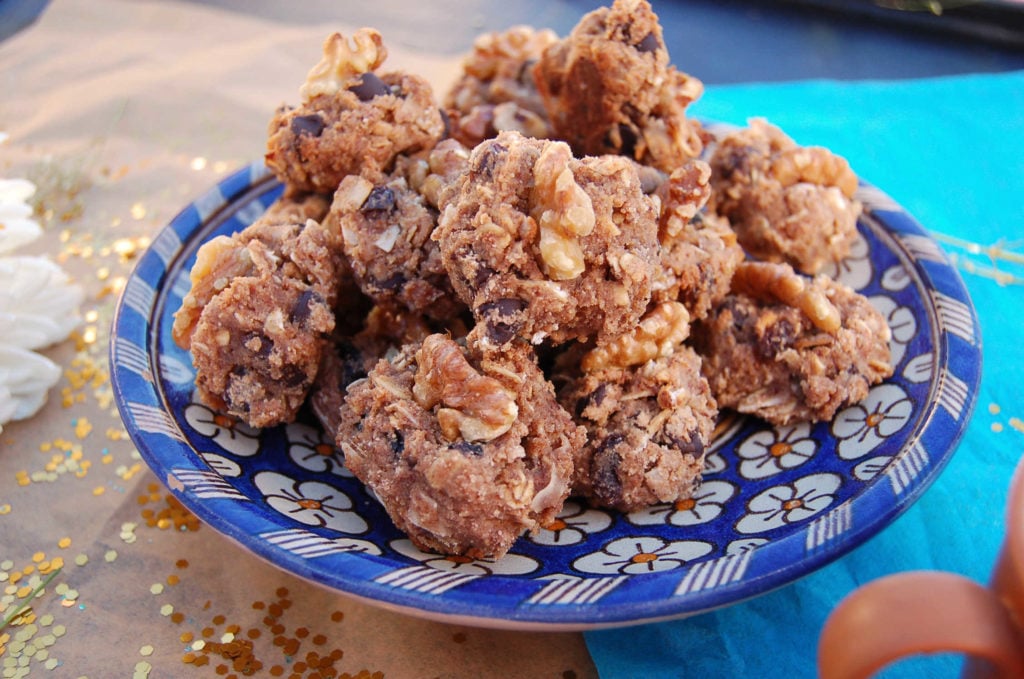


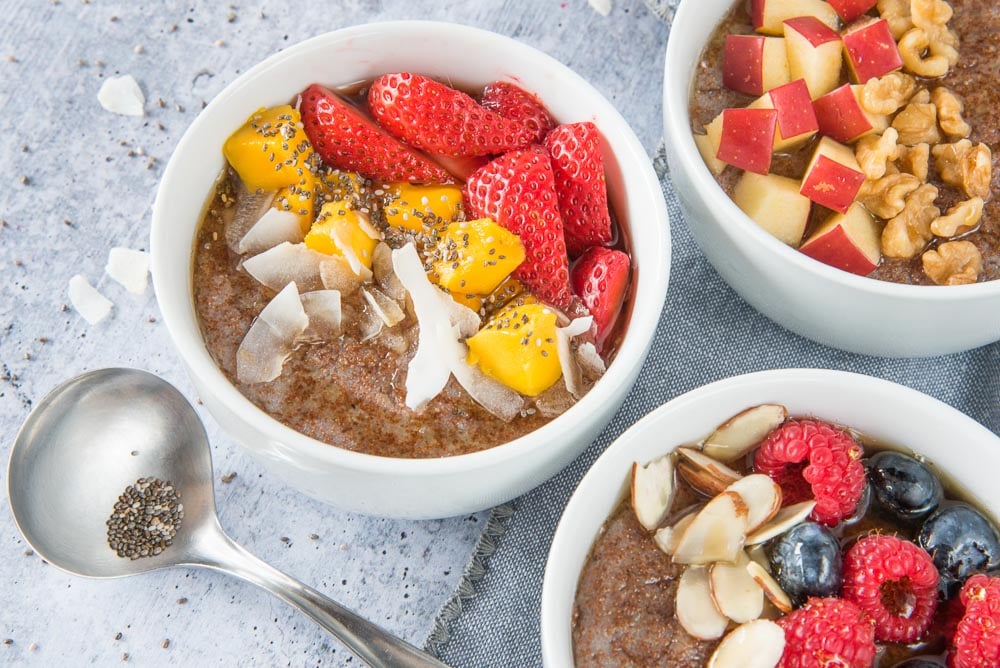
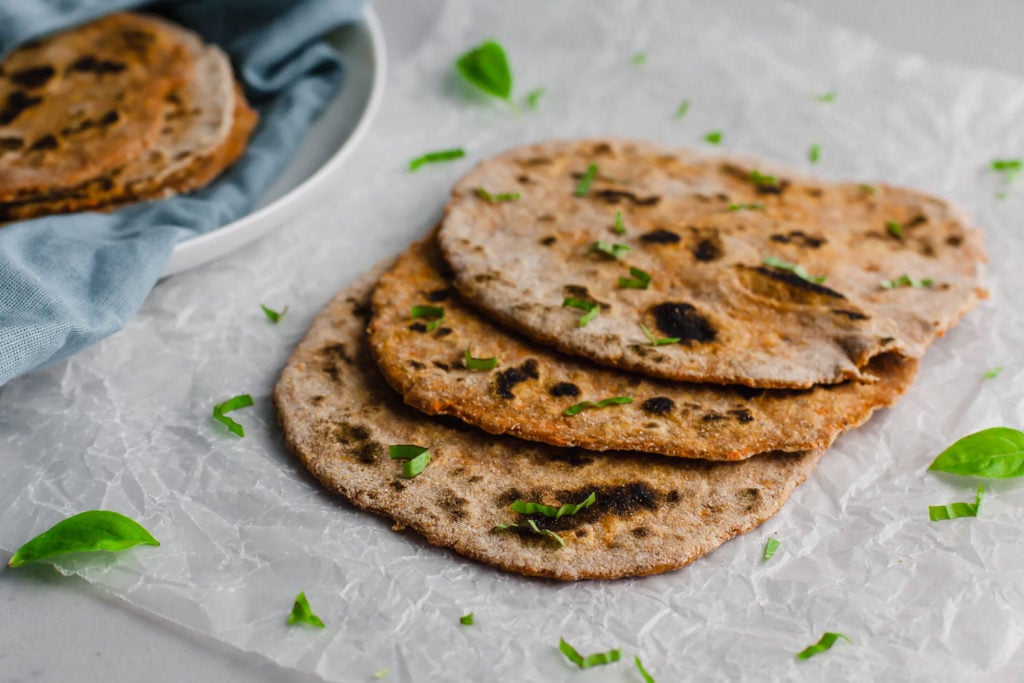


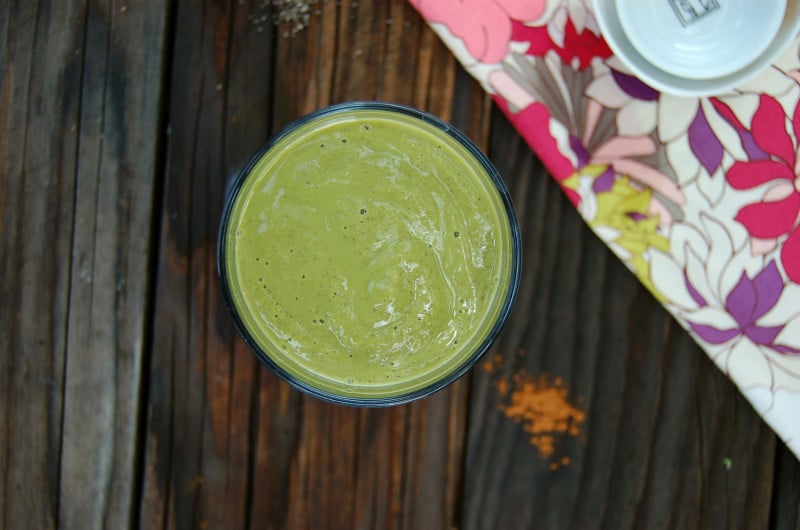



Brilliantly helpful and useful post, will pass to my adult children/ for grandchildren.
Thank you, Sue